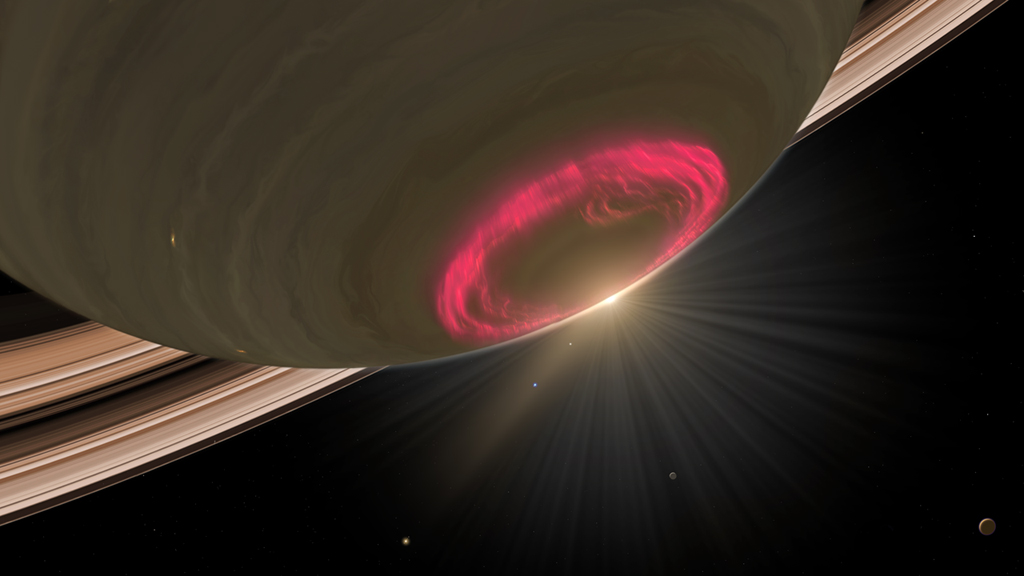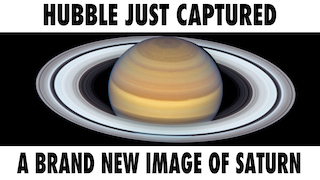Planets and Moons
ID: 11366

Scientists first observed Saturn’s auroras in 1979. Decades later, these shimmering ribbons of light still fascinate. For one thing they’re magnificently tall, rising hundreds of miles above the planet’s poles. And unlike on Earth where bright displays fizzle after only a few hours, auroras on Saturn can shine for days. Auroras are produced when speeding particles accelerated by the sun’s energy collide with gases in a planet’s atmosphere. The gases fluoresce, emitting flashes of light at different wavelengths. Watch the video to see an edge-on view of Saturn’s northern and southern lights courtesy of NASA’s Hubble Space Telescope.



Colossal Glow




Related Story
Story Credits
Please give credit for this item to:
NASA's Goddard Space Flight Center
Cover image courtesy of NASA/ESA/STScI/A. Schaller
Video courtesy of NASA/ESA/University of Leicester/J. Nichols
False-color image courtesy of NASA/JPL/University of Colorado
Hubble image courtesy of NASA/ESA/J. Clarke, Boston University/Z. Levay, STScI
Infrared image courtesy of NASA/JPL/University of Arizona/University of Leicester
NASA's Goddard Space Flight Center
Cover image courtesy of NASA/ESA/STScI/A. Schaller
Video courtesy of NASA/ESA/University of Leicester/J. Nichols
False-color image courtesy of NASA/JPL/University of Colorado
Hubble image courtesy of NASA/ESA/J. Clarke, Boston University/Z. Levay, STScI
Infrared image courtesy of NASA/JPL/University of Arizona/University of Leicester
Short URL to share this page:
https://svs.gsfc.nasa.gov/11366
Keywords:
SVS >> App
NASA Science >> Planets and Moons
https://svs.gsfc.nasa.gov/11366
Keywords:
SVS >> App
NASA Science >> Planets and Moons








